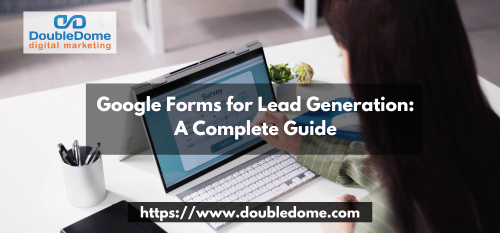By Jo Medico
Generating leads is essential for business growth, but not every method requires a hefty budget. Google Forms lead generation offers a simple yet powerful way to capture leads, engage potential customers, and collect valuable insights. If you’re looking for an easy and cost-effective way to build your contact list, this guide will show you how to use Google Forms strategically for lead generation.

1. Why Use Google Forms for Lead Generation?
Google Forms lead generation is an effective strategy because it’s free, easy to use, and highly customizable. Here’s why businesses rely on Google Forms for lead generation:
- Easy to Use – No technical skills are required.
- Customizable – Personalize forms with branding, images, and custom fields.
- Seamless Integration – Connect with Google Sheets, email, and CRM tools.
- Automated Responses – Send instant confirmation emails to respondents.
- Data Collection & Analysis – Gather insights for better decision-making.
2. Steps to Create a Lead-Generating Google Form
Step 1: Define Your Goal
Before creating a form, identify your objective. Are you collecting emails for a newsletter, qualifying leads for sales, or gathering feedback?
Step 2: Choose the Right Questions
Your form should be engaging yet concise. Include fields like:
- Full Name (for personalization)
- Email Address (to follow up with leads)
- Phone Number (optional but useful for direct contact)
- Industry/Company Name (to segment leads)
- What are you looking for? (to understand needs and tailor outreach)
Step 3: Optimize for Conversions
- Keep It Short – Limit to 5-7 questions.
- Use Multiple-Choice & Dropdowns – Make responses quick and easy.
- Include a CTA – Example: “Submit to receive a free consultation!”
Step 4: Set Up Automated Responses
Enable email notifications so leads receive an instant response, such as:
“Thanks for reaching out! Our team will get back to you within 24 hours.”
3. Promote Your Google Form for Maximum Leads
To maximize Google Forms lead generation, promote your form through multiple channels:
- Website – Embed the form on landing pages.
- Social Media – Share on LinkedIn, Facebook, and Twitter.
- Email Campaigns – Include in newsletters and outreach emails.
- Google Ads – Run targeted ads directing users to the form.
- QR Codes – Print on business cards, brochures, or event materials.
- Blog Posts & Content Marketing – Include links within relevant content.
4. Analyzing & Following Up with Leads
Google Forms automatically stores responses in Google Sheets, making it easy to analyze data. Next steps:
- Segment Leads – Categorize by industry, interest, or location.
- Follow Up Quickly – Contact leads within 24-48 hours.
- Nurture Leads – Send personalized emails, offers, or schedule calls.
- Optimize Your Form – Improve based on response rates and feedback.
- A/B Test Your Forms – Experiment with different questions, layouts, and CTAs to improve conversion rates.
5. Best Practices for Google Forms Lead Generation
To get the most out of Google Forms lead generation, follow these best practices:
- Use Conditional Logic – Show or hide questions based on responses to keep the form relevant and engaging.
- Leverage Integrations – Connect Google Forms with CRM tools like HubSpot or Zapier for seamless lead management.
- Offer Incentives – Encourage participation with discounts, free resources, or exclusive content.
- Ensure Mobile-Friendliness – Many users will fill out the form on their phones, so test responsiveness.
- Regularly Review & Update – Keep questions relevant and aligned with evolving business goals.
Conclusion
Google Forms is an underrated yet powerful tool for generating leads without extra costs. By optimizing questions, promoting effectively, and following up strategically, you can turn a simple form into a lead generation machine.
Need help setting up a high-converting lead generation strategy? Book a free strategy call today!








